
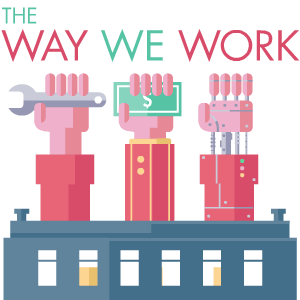
A month ago, I was newly unemployed and unchained in the panhandle of Florida. Now I live in an eco-village on a volcano, in the middle of a lake in Nicaragua.
I was working as a software engineer at a robotics startup in Florida when I got laid off. Sure, the experience was humbling, but I was already feeling demotivated. I want to work, but I didn’t want to return to the same thing immediately. I needed a respite, some freedom to decide how I actually wanted to live when my job wasn’t defining my hours and days.
I don’t need to tell you that working a corporate job isn’t always satisfying. The focus is often purely on profit, and it can be demoralizing to have no say in what we labor on–and, worse, see projects we’ve invested in over months get thrown out. Even the amount of time and energy we commit to getting ready to leave for work, and commuting there and back, is exhausting. At day’s end, we’re left with little to contribute to our communities–if we’re fortunate enough to have them outside of our nine-to-fives. Eventually, we wither; and if we don’t quit, we’re at best pruned.
I was curious how people interested in the idea of living together sustainably actually did it. With this in mind, I wondered how many changes I would have to make to find a life apart from a Western culture where what we do for a job is our primary, defining attribute.
After some internet research, I set off for Ometepe Island and an eco-village by the name of Inanitah. One of the changes involved living in a communal space and growing my food with permaculture. Another meant squatting over a maggot-filled hole to defecate. I guess that’s who I am now.

Eco-villages like Inanitah have been around since the late 1980s. Their principles include being as resourceful as possible, maintaining a shared sense of values, and encouraging community members to educate one another. In an anthropological context, they’re a fairly new style of human living.
Inanitah itself was set up on 22 acres of land purchased by Paul and Gaia, a German and American, roughly eight years ago. Paul had an interest in water systems and had spent some time studying and researching them. It was enough for him to set one up that fed from a spring on the volcano, providing water for the village and 30 other families living nearby. Paul and Gaia had also educated themselves on natural building, allowing them to construct houses and common spaces made of cob (clay mixed with sand and straw). They built kitchens, open-air temples, cabins, and shacks.
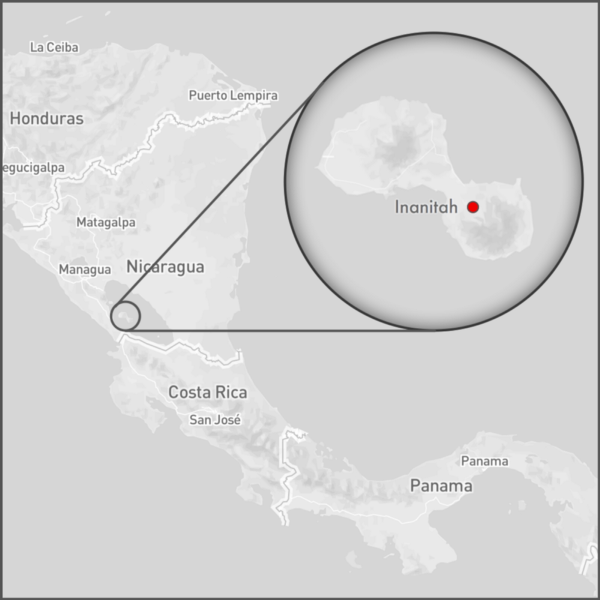
Inanitah is currently functioning as a temporary community, meaning that most of its members don’t stay for longer than a year. Structurally, it only has capacity to handle a few dozen people. These factors don’t mean that eco-villages like it lack the ability to scale.
Despite the remoteness–or perhaps because of it–I’m surrounded by people from the city: Boston, D.C., New York, San Francisco, Seattle, Chicago. Most were previously involved with work that’s different than the kind we’re doing here: software engineering, quantitative analysis, hair styling, life coaching, and filmmaking. There’s even a couple from the Netherlands who have been traveling for several years as digital nomads, with a Dutch film crew following them.
While everyone at Inanitah contributes some amount of work, not all community members do so equally. “Spaceholders” living in the village commit to a six-month stay and volunteer work that requires roughly 30 hours per week; they live for free. “Explorers” are volunteers who commit to staying in the village for a month, pay $450, and work roughly 15 to 20 hours each week. “Visitors” sign up for a minimum of a week’s stay, pay a rate of $650 per month, and contribute roughly two to four hours of work per week. No matter your tier commitment, everyone gets three meals a day.
The eco-village scheme isn’t perfect–it’s often still a business. On some level, it seems as though a good bit of profit is being made, which makes some community members uncomfortable. Some residents see certain costs as unnecessary. Paul, for instance, prefers to hire local Nicaraguans for construction tasks because if he doesn’t he must personally oversee the work of inexperienced volunteers who don’t know much about building. Hiring local helps him to complete these tasks without delegating management within the community. Perhaps as an alternative a local Nicaraguan could lead teams of volunteers so they could get experience in natural construction. Other fees collected from residents tend to pay for food that isn’t grown inside the village and must be sourced from other farms on the island. From what I’ve seen, more food could definitely be grown in the community to reduce food costs.
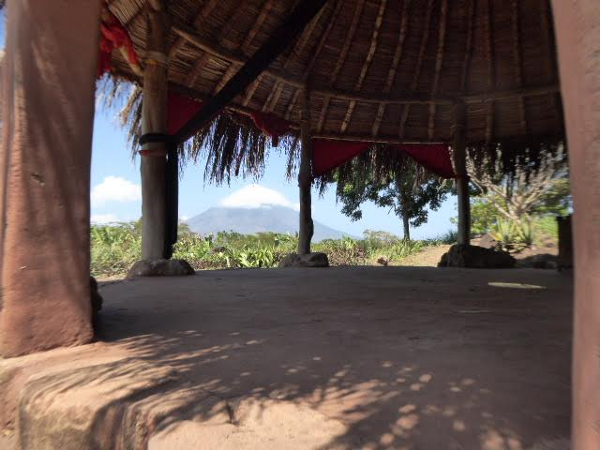
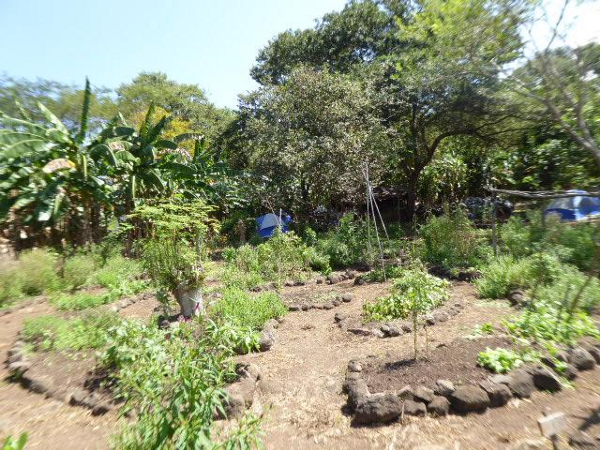
Those issues aside, imagine a place, and a life, where no effort or item goes to waste. That’s one of the primary values of eco-living. At a startup, I could pour hundreds of hours into a mobile application for a product that had no customers, only to see those efforts discarded when the project got canceled. Here, I can plant a fruit tree that will grow to supply food for a community (even after I myself have left it) and help other trees and plants to grow while cleaning the air around it. I can make a meal and watch others enjoy it in real time. I can teach skills in a workshop and then, in the days following, witness people use them. I can see the tangible effects of my work.
In the village, tasks are assigned on a day-to-day basis out of pure necessity. Someone needs to clean the kitchen. Someone needs to water the vegetable garden. Someone needs to help cook lunch. There’s an array of changing tasks each day from which people select, helping to ensure that they are mostly happy with what they contribute overall.
Our literal sustenance relies on permaculture, a relatively new form of agriculture developed in the 1970s that uses a variety of perennial plants in a food forest system. Essentially, permaculture is a food-producing system that mimics a natural forest. It offers a higher crop yield than monoculture, as a greater number of plants are placed more efficiently, and utilizes nearly 100 percent of available sunlight with its various layers. Also, the system does not rely on pesticides, partially because it’s harder for pests and disease to work their way through the variety of plants than it is to attack a homogenous monoculture vulnerable to all of the same pests and disease.
While permaculture is very much a developing field with its principles still in flux, the growth system generally follows 12 guiding principles of design no matter where it’s implemented. Some key components include working with the land you have by finding a use for every part of it and encouraging full reuse of resources within the system.
Inanitah produces much of its own food in permaculture gardens, reuses everything, and produces no waste. Fruit peels and excess food are fed to the wild dogs that live in the community or the pig that produces manure. All defecation is done into compost toilets, several of which are simply covered holes in the forest filled with maggots that help the decomposition process. While there’s some serious debate around food safety issues when using human waste in farming compost, it’s worth noting that it’s been a common practice for thousands of years and still is in many developing countries.
All non-degradable waste is compacted into plastic bottles to be used as eco-bricks for the construction of new cabins. All dishwater from the kitchen drains into banana tree fields at lower elevations. Fallen trees are used as firewood to prepare meals and heat the hot tub. Any ash produced by burned wood is used as a disinfectant for dishes and hand-washing.
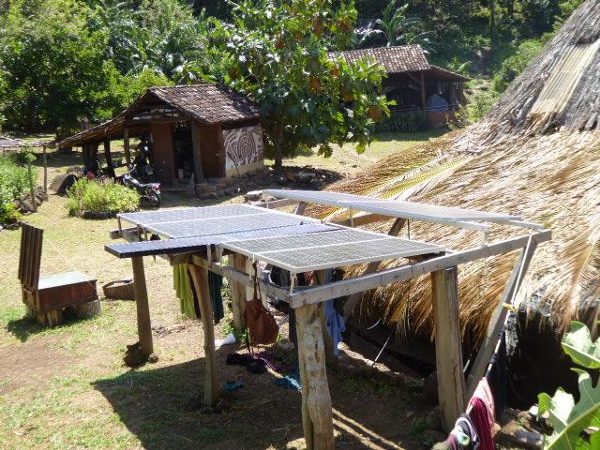
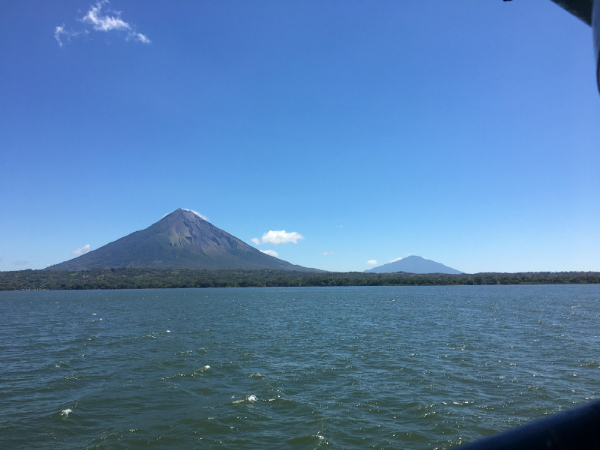
Before any work begins, every morning there is one hour of meditation. That’s followed by an hour of volunteer-led yoga. Sharing a living and working space with a group of people around the clock wasn’t normal for anyone before landing at Inanitah. This makes mindfulness and meditation imperative for reducing stress and anxiety and maintaining a communal sense of perspective and calm. The yoga, in particular, helps with maintaining a healthy awareness of the body in what can feel like tight physical quarters.
Everyone in the village has afternoons and weekends to themselves. Mostly that means leisure time spent in a hammock, journaling, swimming, sunbathing, enjoying the hot tub, or slacklining. When we’re not working, it turns out that a great deal of knowledge gets exchanged. With an excess of free time and no television, people end up devoting a good many hours to learning from and teaching one another. Community members who have specific skills–whether in tantra, therapeutic yoga, or digital nomadism–offer workshops where anyone interested can attend. I’ve seen others offer massage therapy in exchange for advice about occupations.

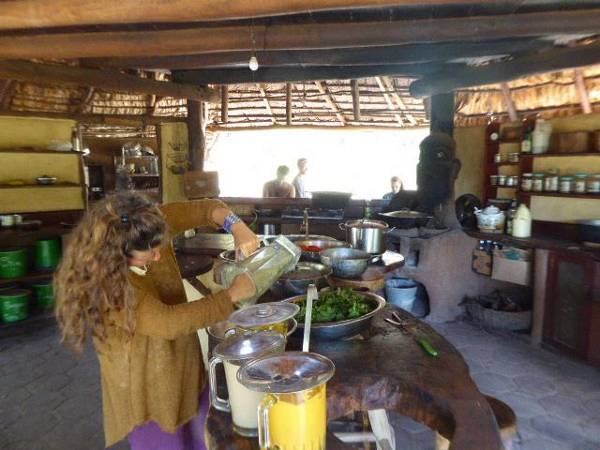
We aren’t all going to uproot ourselves to live on a volcano tomorrow. Even though I lost my job, taking a hiatus from my other responsibilities to live in an eco-village for a short period of time has been a privilege. A 15-hour work week? Now that’s refreshing. But just because it may not seem sustainable over the long-term, nor does the prospect of staying here for the rest of my life feel realistic, there are valuable lessons to borrow from an eco-village lifestyle. There are practices to take with us when we return to our more stable and permanent communities.
First, there’s something to being more mindful about the amount of work we do once we clock in at the proverbial office, especially in the face of stalled productivity and so many of our personal needs going unmet. Both living with built-in leisure time and seeing education put back into the hands of people bound together in community is very empowering.
But obviously that doesn’t literally feed us. If we can start to tackle the issue of growing healthy food that’s more readily available and cost-conscious, people wouldn’t need to work as much to meet their basic needs. Healthy eating is paramount to a healthy population. As a result of urbanization in America, for instance, too many people have been cut off from easy access to nutrient-dense foods. Roughly 23 million Americans–nearly half of them low-income–live in food deserts, meaning they don’t have access to fruits, vegetables, and other healthy foods. In these defined cases, smaller marts with sugar-filled foods meet shopping needs in places where grocery stores are over a mile away from those living in urban areas without a car, or 10-plus miles out from those in rural communities.
As one solution, a number of smaller towns are currently building “agrihoods” that actually place healthy growing schemes at the physical center of communities–think ramped-up, very sophisticated community gardens. The Michigan Urban Farming Initiative is still constructing one in Detroit that has already offered 50,000 pounds of fresh food to local families free of charge. Similar ideas are being discussed for Philadelphia. While it’s not exactly permaculture, these gardens are high-producing per square foot and use hydroponics to further increase yield.
If you think about it, this kind of thing is actually a throwback. In February of 1942, the U.S. Department of Agriculture published an informational brochure promoting the at-home growth of leafy vegetables as much as possible between early spring and winter to help avoid food rationing in the country during World War II. At the height of the war, America had more than 20 million “victory gardens”–food gardens planted in public spaces, backyards, vacant lots, baseball fields, city rooftops, and window boxes. If it was possible to do it then, even in urban environments, then similar projects given the right promotion and advertising aren’t far from reality.
That being said, you don’t need to live in Central America to create a permaculture community. Permaculture itself can transform land. In 2000, Geoff Lawton traveled to Jordan and used principles of the growing system to plant specific plants in a particular pattern in order to remove salt from the soil and make the climate cooler, while growing an entire green ecosystem in the desert. He documented the project in an incredible 30-minute film called Greening the Desert.
Cold climates aren’t excluded from permaculture projects either. There have been permaculture design courses on offer in the Arctic, where students learned about eco-villages, natural building, water systems, and gardening all within a polar setting.

Ultimately, I view living in an eco-village as an experiment. Learning to live in a community and farm the food I ate are two experiences alone that have made it worth the cost I paid to be here. Long-term, and in an ideal world, we could all live in eco-villages if we wished and no money would need to exchange hands. If we’re looking for a future where we reinvent the way we work, integrate our activities into the natural world, and prioritize healthy human development, then eco-villages, in many senses, can be a model for our “neighborhoods of the future.”


How We Get To Next was a magazine that explored the future of science, technology, and culture from 2014 to 2019. This article is part of our The Way We Work section, which looks at new developments in employment and labor. Supported by Pearson. Click the logo to read more.
